Hardy fuchsia is one of the hardest working and most obliging groups of plants in the garden. There are few plants that flower from early June into November with little maintenance, and also continue to make fresh, spring-like foliage into autumn. When other plants have succumbed to the onslaught of cold winds, hardy fuchsias stand proud, a respite from the impending gloom of the winter months.
You may also like
- The best autumn garden to visit with fiery displays
- How to keep your garden looking great through autumn
- The kit you need for autumn tidying
At one time, all fuchsias were considered tender and used only for summer bedding or grown in pots that could be ushered into the conservatory at the onset of winter. Today, changing weather patterns favour the hardy fuchsias; with milder winters, wetter summers, and the rarity of frost before late November, flowers are produced into the depths of autumn. They do particularly well on the light, stony soils here at Malverleys in Hampshire, and we use them throughout the garden. Come autumn, the hardy fuchsias will finish with a flurry, sending out masses of the gorgeous, distinctive flowers against a foil of fresh foliage.
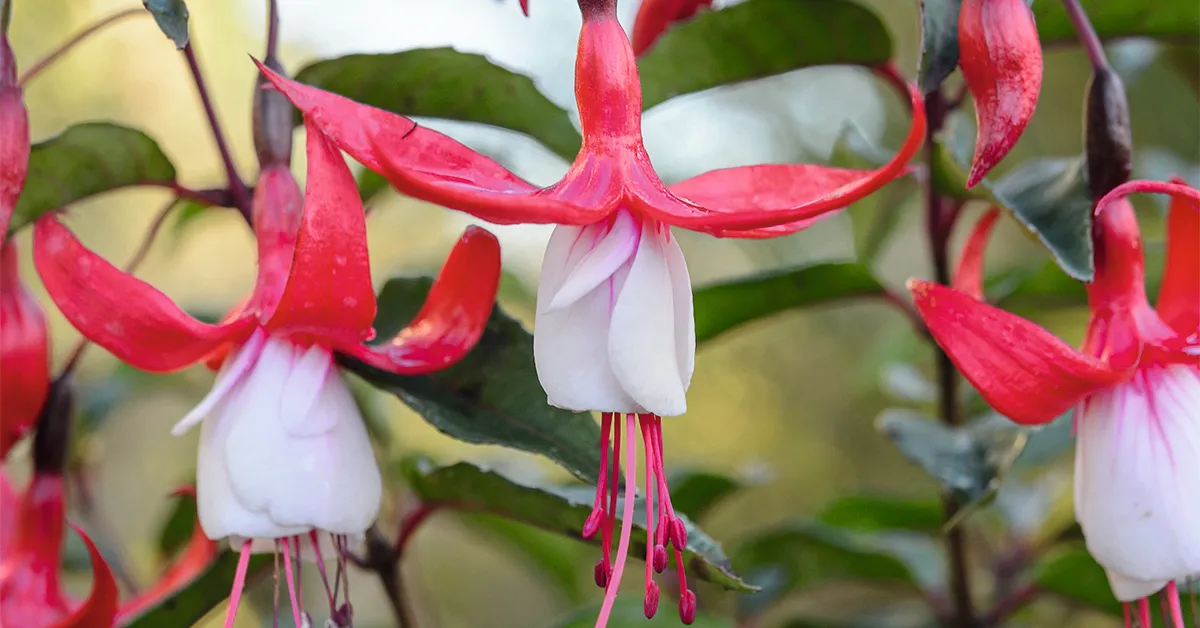
A nearby school has a Fuchsia magellanica var. molinae planted in a sheltered playground, and even with children plucking the flowers and teasing the branches, it flowers almost continuously – even through winter – with little maintenance. In most parts of the UK, fuchsias are deciduous shrubs, and in the coldest areas, they are often reduced to the ground by prolonged, cold weather. In mild, southwestern, coastal regions, they can become medium- sized shrubs and retain their foliage throughout winter. When many other plants have fallen by the wayside, it’s the stalwart fuchsias that will often steal the show.
How to grow hardy fuchsia
When to cut back hardy fuchsia
When cutting back hardy fuchsia, it is important to remember that fuchsias flower on the new growth from spring into autumn. Pruning hardy fuchsia can be used to promote more vigorous growth and flowering where desired. Ideally, this should be carried out in the spring after the chance of frost has passed (although earlier pruning for the sake of spring combinations may be worth the risk). If a plant has suffered frost damage, cut back to live wood, or after an extreme winter to the base of the plant. Look for the new shoots, this will indicate how much has been frosted and guide you on where to prune to.
When to plant hardy fuchsia
Plant hardy fuchsias in spring, especially in areas with cold winters, to allow young plants enough time to establish a good footing before the winter sets in. Freezing weather conditions may kill off the branches, and it is important to have an established rootstock from which the fuchsia will regenerate.
When do hardy fuschias flower?
Hardy fuchsias flower from late spring into late autumn, or even early winter. In mild climates or coastal and city climates, fuchsias will start flowering earlier, and it is not unusual to find fuchsias still in flower in December.

How to plant hardy fuchsia
When planting, make sure you incorporate a decent slug of compost into the soil as fuchsias are hungry, fast-growing plants that, if cut back, are capable of reaching around 1.5m during the growing season.
Where to grow fuschias
Fuchsias will succeed in most conditions and soils, but will be at their best in a mild, cool site with moist, humus-rich soil. In many places on the west coast of Ireland, they have escaped the garden and have become established in the hedgerows to such an extent that they have now become part of the landscape. They also do particularly well in Cornwall and western Wales, but are extremely adaptable, and once established they can tolerate both heat and cold as well as drought. In extreme heat, you may find that flowering is delayed but it will commence once the cooler weather returns.
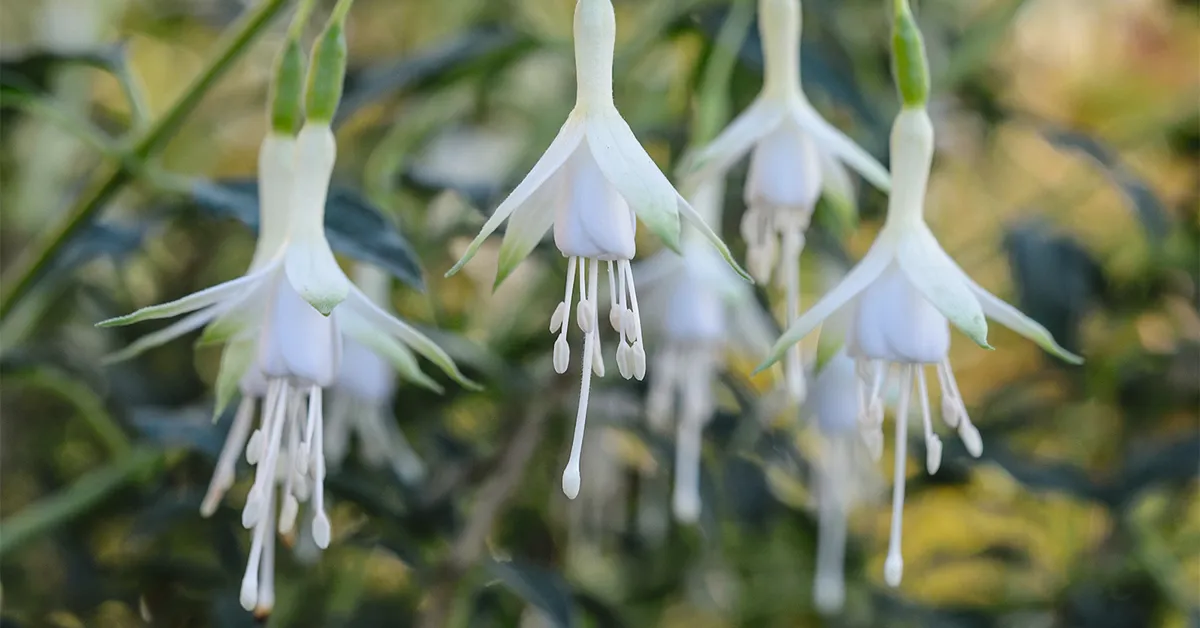
What to grow with hardy fuchsia
Hardy fuchsias are not fussy plants – they work well in many planting schemes and make excellent pot plants. They are also quite at home in either the flower garden, shrubbery or a woodland border.
Fuchsias flower from base to tip, and are suitable for the front or back of the border, although the small foliage looks best among larger-leaved plants. Many species are natural woodlanders and grow well in partial shade. In dim, dappled light, the pale-flowered cultivars, such as Fuchsia magellanica var. molinae and Fuchsia ‘Hawkshead’, show up much better than those with darker red and purple flowers.
Once established, fuchsias make competitive plants in a mixed border. At Great Dixter, for example, there is a fine specimen of Fuchsia magellanica var. gracilis ‘Aurea’ next to a Magnolia grandiflora. The fat, shiny leaves of the magnolia contrast wonderfully with the lemon-lime foliage of the fuchsia. At Malverleys we have a similar, all-green relationship with F. ‘Enfant Prodigue’ combined with M. grandiflora, and it is a testament to the fuchsia’s ability to stick up for itself that it thrives, even when planted closely to the aggressive roots of the magnolia. The fuchsia at Dixter was underplanted with Spanish bluebells and would be cut back to 30cm in early March before the bluebells began to flower. New yellow shoots were produced in time to combine nicely with the bluebells, and then ultimately conceal the aestivating bulbs.
Fuchsia problems
The bane of fuchsia growers is the sap-sucking capsid bug, which feeds on the new shoots during spring and summer and will inhibit flowering. If left unchecked the bugs will disappear in September, and flowering will recommence, but if this is undesirable, a broad-spectrum insecticide should take care of the problem.
The best hardy fuchsia for your garden
Fuchsia ‘Mrs Popple’

A fabulous shorter fuchsia cultivar that dates back to 1899 and is much-loved today. Large, rounded, fat buds pop to reveal, large plump flowers, with scarlet sepals and purple-cerise petals. 1m x 1m. AGM. RHS H4, USDA 7a-10b.
Fuchsia ‘Alice Hoffman’
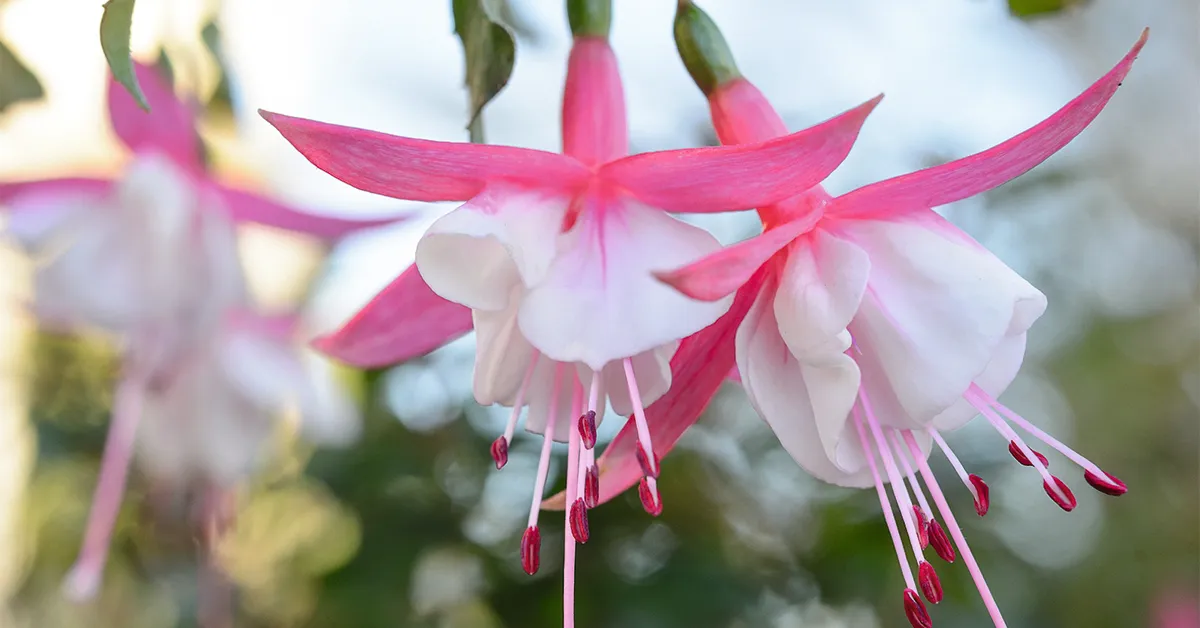
Good for the front of a border or a pot, this compact fuchsia cultivar makes a small, rounded shrub with a faint bronze tint to the young leaves. Its splayed, quartered sepals have white, tube-like corollas. 50cm x 50cm. AGM. RHS H4, USDA 7a-10b.
Fuchsia ‘Madame Cornélissen’

This fuchsia produces strong, upright stems that hold masses of medium-sized, semi-double flowers. Blooms are produced all through the summer, but are more prolific in the autumn. 1m x 1m. AGM. RHS H4, USDA 7a-10b.
Fuchsia magellanica var. molinae
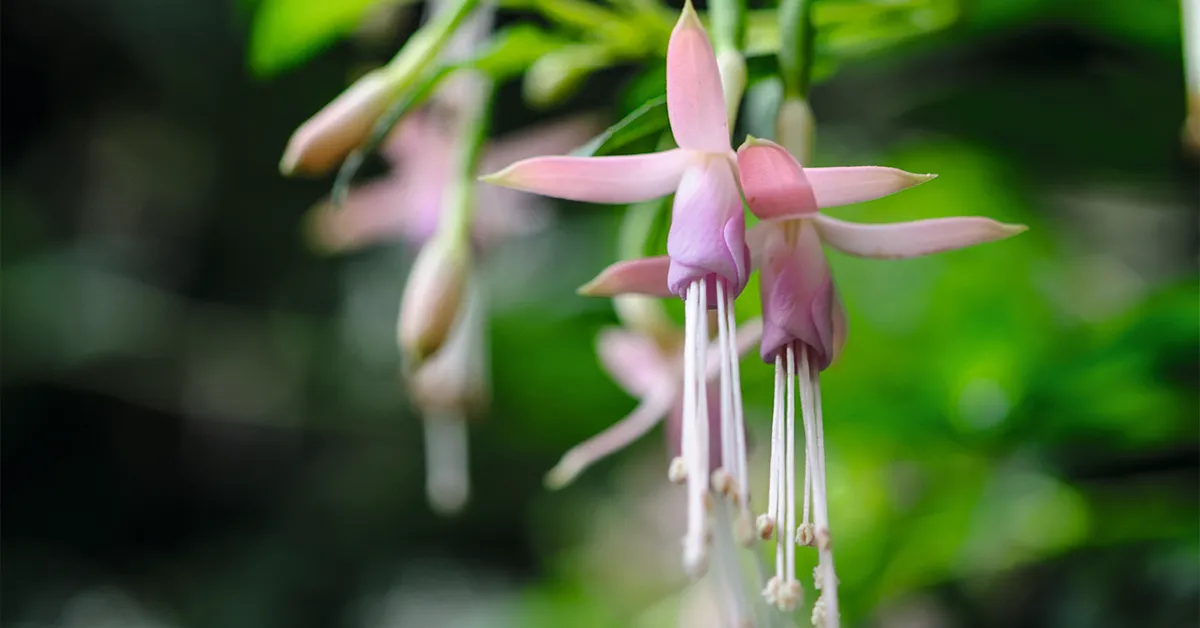
A pretty fuchsia with soft, blush-pink flowers and pale-green foliage. It can make a substantial shrub, with lovely flaky bark. Can sucker if the roots are disturbed, or left behind after removal. 2.5m x 2m. RHS H4, USDA 7a-10b.
Fuchsia ‘Hawkshead’

A white-flowered hybrid, of Fuchsia magellanica var molinae x Fuchsia ‘Venus’, with a greenish tint to the sepal tips. Possibly the best white-flowered hardy fuchsia, it looks fabulous in a shady corner. 1.8m x 1m. AGM. RHS H4, USDA 7a-10b.
Fuchsia hatschbachii
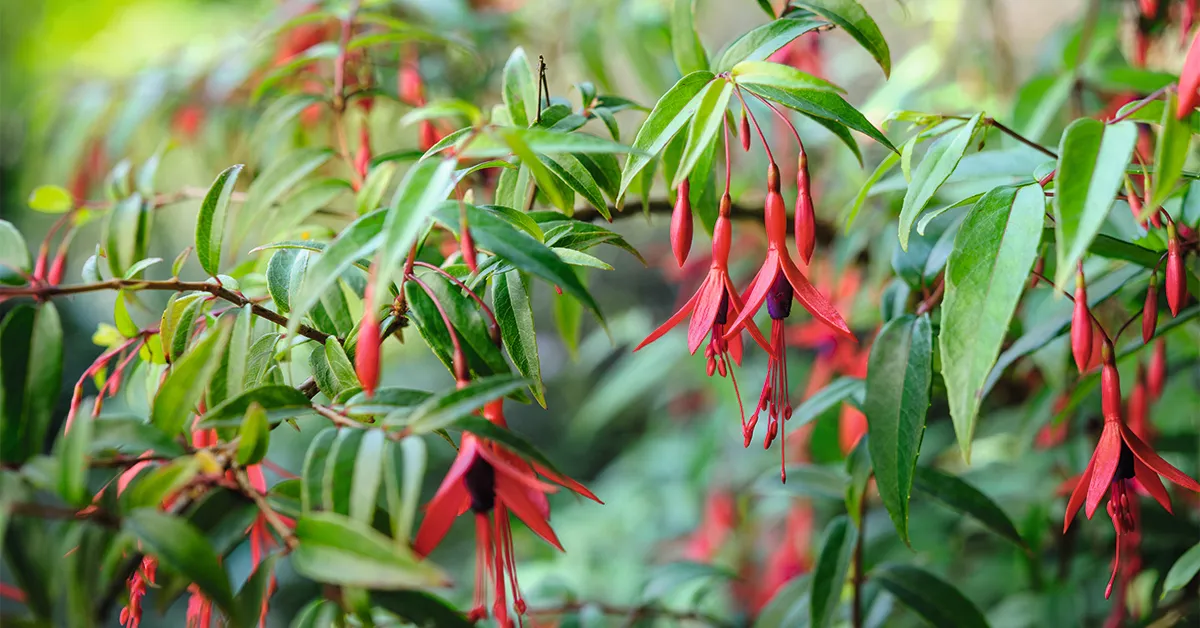
More commonly known as Hatschbach’s fuchsia, this Brazilian species has particularly notable, willow-like foliage that is held on slender, arching stems. It makes an elegant shrub in the mixed border. The flowers are a slender version of the typical hybrid fuchsia flower. Used beautifully in the Exotic Garden at Great Dixter. 2m x 1.5m. AGM. RHS H2, USDA 10a-11b.
Fuchsia x bacillaris ‘Reflexa’

Makes a beautiful, small shrub with tiny leaves and small, trumpet-shaped, bright- cerise flowers, which become darker as they age. Produces small, black fruits. 50cm x 50cm. RHS H4, USDA 7a-10b.
Fuchsia 'Prosperity'

Large blousy, double flower. Its reflexed sepals are a bright lipstick pink with pink-veined white, double petals. Decked with flowers from top to bottom, place at the front of a border so lower flowers are not lost. 1m x 1m. AGM. RHS H3.
Fuchsia magellanica var. gracilis ‘Versicolor’

A shrub with soft, grey- green leaves, each with a white picotee edge. New shoots are suffused pink and the slim flowers are fuchsia-red. Cut hard back to get best foliage. 1.5m x 1.5m. AGM. RHS H4, USDA 7a-10b.
Fuchsia 'Tom Thumb'
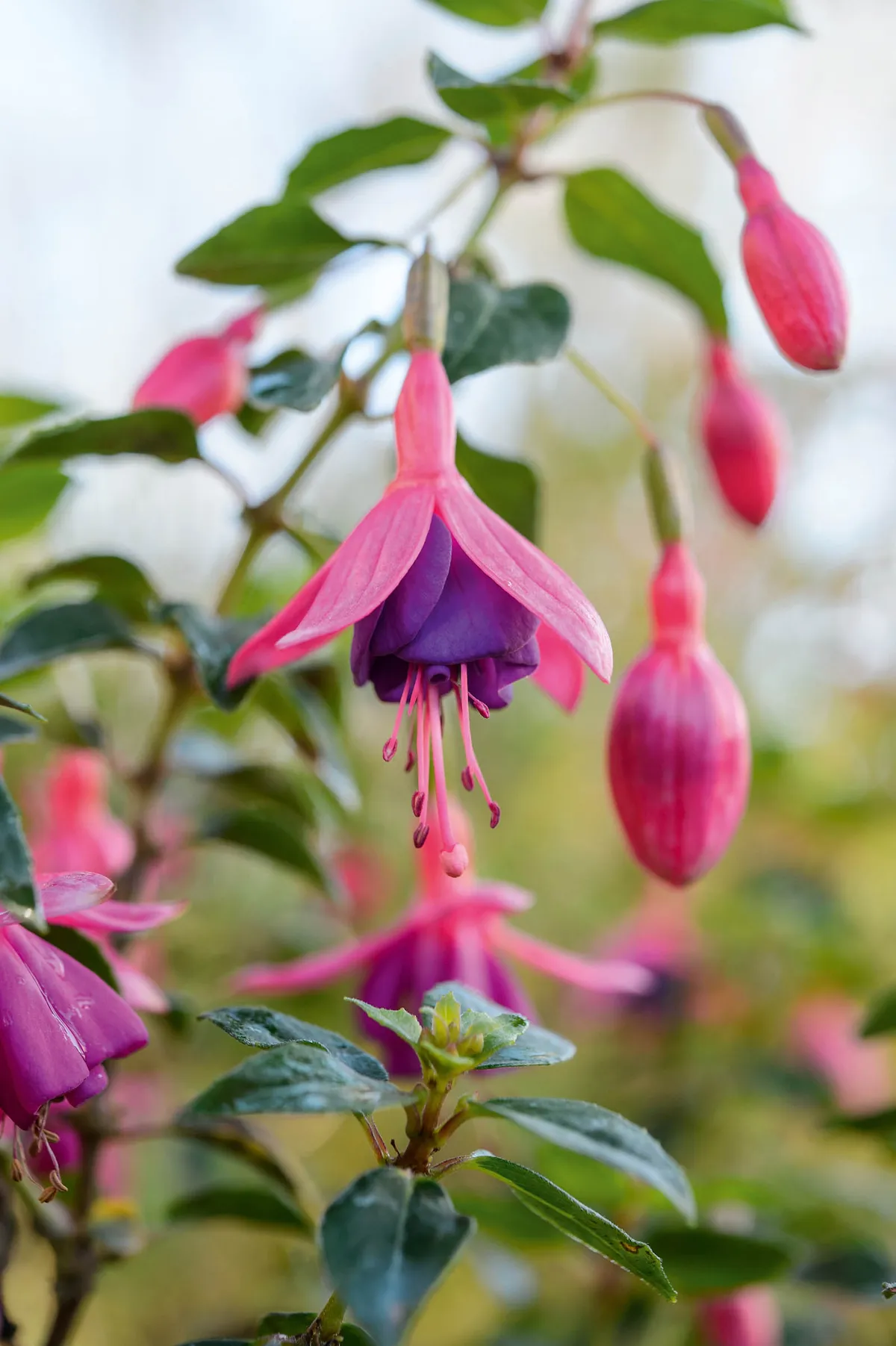
Where to buy hardy fuschia
• Great Dixter Nurseries Great Dixter, Northiam, Rye, East Sussex TN31 6PH. Tel 01797 254044, greatdixter.co.uk
• Lower Kenneggy Nurseries Rosudgeon, Penzance, Cornwall TR20 9AR. Tel 01736 762959, lowerkenneggynurseries.co.uk
• Potash Nursery Cow Green, Bacton, Stowmarket, Suffolk IP14 4HJ. Tel 01449 781671, potashnursery.co.uk
• Victoriana Nursery Gardens Buck Street, Challock, Ashford, Kent N25 4DG. Tel 01233 740529, victoriananursery.co.uk
In brief
HARDY FUCHSIA
What Fuchsia is a genus with more than 100 species, named in honour of the German botanist Leonhart Fuchs (1501-1566). They are mostly small shrubs and trees, but there are also prostrate, low-growing, and scrambling members. The leaves are normally oppositely arranged, with pendent flowers on slender pedicels produced from the leaf axils.
Origins Most Fuchsia species are native to Central and South America, but a few are native to an area from New Zealand to Tahiti.
Season From late spring into late autumn, or even early winter. In mild climates or coastal and city climates, fuchsias will start flowering earlier, and it is not unusual to find fuchsias still in flower in December.
Size In the coldest areas of the UK, hardy fuchsias may be cut down to the ground in winter (by frost or gardener), but will regenerate from woody rootstock and can reach 1-1.5m.In milder areas, they will make a medium-sized shrub of 1.8-3m.
Conditions For best performance, grow in any good, moist but free-draining soil in full sun to partial shade.
Hardiness RHS H4, USDA 7a-10b.
